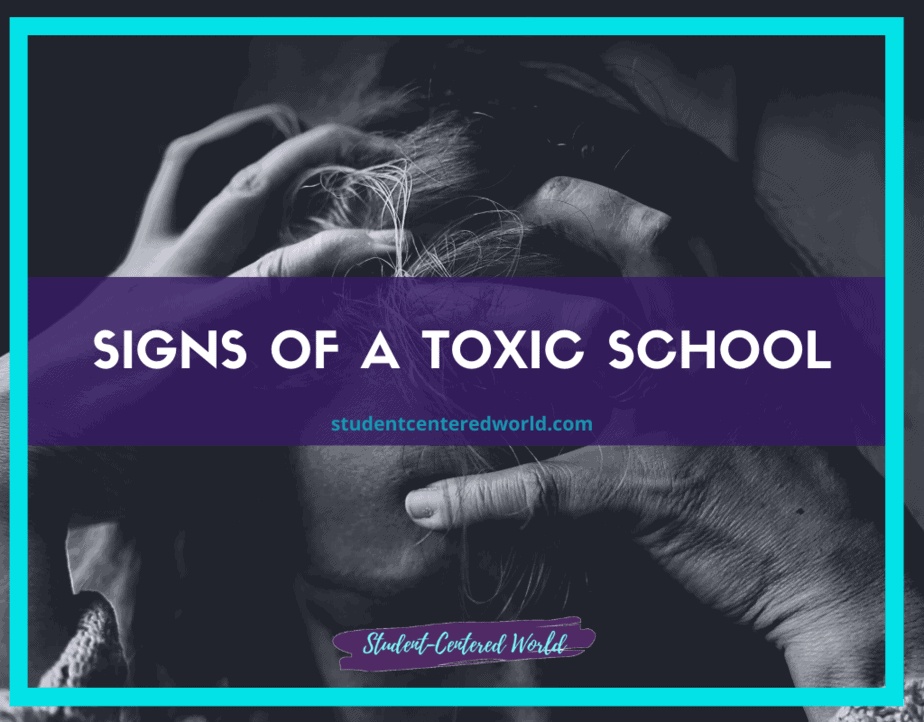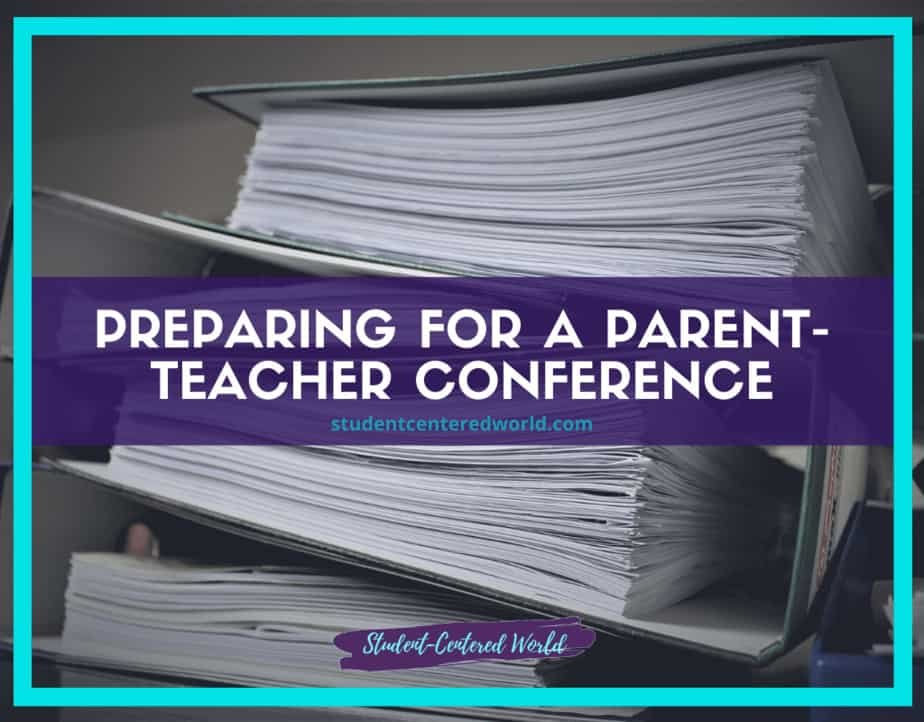How to be Trauma Informed in the 21st-Century Classroom
Especially in this season of teaching, it is so important to know how to be trauma informed in the classroom. Trauma-informed teaching is a philosophy and set of practices that take into account how people’s early experiences influence their learning, behavior, and health. Trauma-informed teaching recognizes the signs of trauma in people’s lives, understands common responses to overwhelming experiences, and responds appropriately to assist students.
Trauma can be defined as any negative experience that overwhelms our ability to cope and disrupts our capacity to feel and express a full range of emotions. It can be related to one single event or it can be the repeated experience of neglect, abandonment, betrayal, violence or threat. Whether we are the ones experiencing trauma (i.e., living with addictions) or whether we are exposed to trauma in our families (i.e., parents with mental health issues, harsh discipline, physical or sexual abuse), we all experience challenging life events that take a toll.
Yet despite the significant effect of trauma on people’s lives, there is little discussion about how to navigate its impact in our daily interactions with the children and youth who live with these experiences. This is why knowing how to be trauma informed is more important now than ever.
The Trauma Effects of the COVID-19 Pandemic Era
The era of COVID-19 will forever be remembered as a difficult time for everyone that had long-lasting effects on so many. Some people feel lost and not sure what to do. Others feel overwhelmed or scared about the future.
This is the pure definition of trauma and we all live through it
So now, compounded with all the original reasons that knowing how to be trauma informed was so important, now we need to know how to be trauma informed due to something we all experienced collectively.
Trauma-informed teaching is about helping children who are struggling to cope with the effects of trauma. As a classroom teacher, you can be a powerful source of support for children who are struggling with the effects of trauma. This approach brings our awareness to the ways that students’ experiences can manifest themselves in ways that affect their learning and behavior, and it allows us to understand how our responses impact these students.
While not all students may have experienced significant trauma, many will have been exposed to trauma in their families or communities.
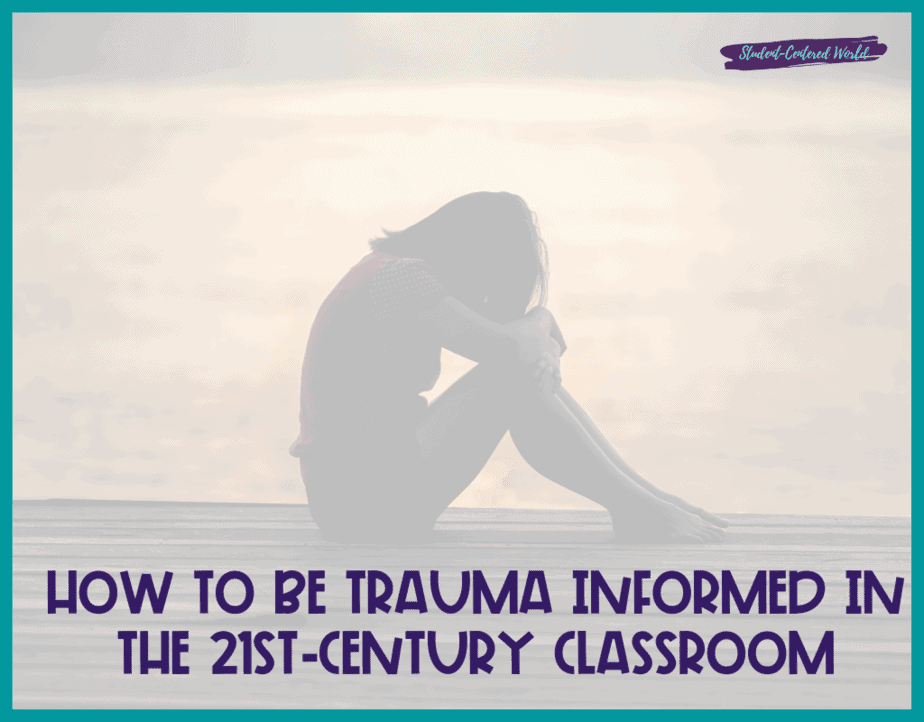
The Types of Trauma and their Effects
Trauma can affect all areas of development, including cognitive, social, emotional, and physical. Many people affected by trauma also struggle with mental health problems such as depression or anxiety.
The effects of trauma can be long-lasting and may impact a person throughout their life.
While we all can experience and recover from traumatic events, for some people these events result in long-term changes in the way they think and feel about themselves and others, making them vulnerable to further challenges or stressors. This is known as posttraumatic stress disorder (PTSD), a set of symptoms that may develop after a person experiences a traumatic event.
- Fear, anxiety, or horror related to one’s experience(s)
- Frustration, irritability, and aggression related to one’s experience(s), for example, lashing out when feeling misunderstood
- Avoidance of certain actions/places/situations related to one’s experience(s)
- Intrusive memories or nightmares related to one’s experience(s)
- Negative thoughts and feelings that don’t go away are related to one’s experience(s).
In addition, if a child continues to have strong reactions after the traumatic event is over, this may indicate that their reaction is being maintained by current life events.
One of the most important parts of knowing how to be trauma informed is understanding that there are different types of trauma, and not assuming which type your child is dealing with. Some common “types” include:
- Developmental Trauma (Past neglect or abuse)
- Situational Trauma (Witnessing traumatic events happening to others in person or on the news)
- Acute Trauma (A single event such as a car accident, natural disaster, or sudden death of a loved one)
- Chronic Trauma (Repeated events such as ongoing neglect, physical abuse over time, and/or prolonged medical conditions without relief).
This is important to note because types of trauma can have a long-lasting impact on students’ learning abilities, behaviors, and even their physical health.
Some basic things that are helpful to know include:
- If a student’s academic performance is slipping or behavior issues are cropping up it may be due to the effects of trauma. This may seem like common sense but it’s good to keep in mind that trauma can and does affect students’ abilities to learn and interact with others.
- If a student has experienced developmental, situational, acute, or chronic trauma there is a wide variety of symptoms that may result. These symptoms range from changes in academic performance and behaviors to physical symptoms such as stomach aches or headaches.
- It’s important to note that trauma is not something a student can “just get over” and it does not discriminate. It occurs in all cultures, races, socioeconomic classes, genders, etc.
- Trying to figure out what the “right thing” to say or do is when working with students who are dealing with trauma will most likely result in saying or doing the wrong thing. It’s important to keep this in mind so that you can avoid causing unintended harm or making it worse for them.
- Whether students are dealing with developmental, situational, acute, chronic, or multiple types of trauma there is no “one way” to respond because everyone copes differently. A lot of the time it’s a good idea to just listen and validate their feelings.
- It can be very powerful if a student feels heard, validated, and understood so being as supportive as possible is important.
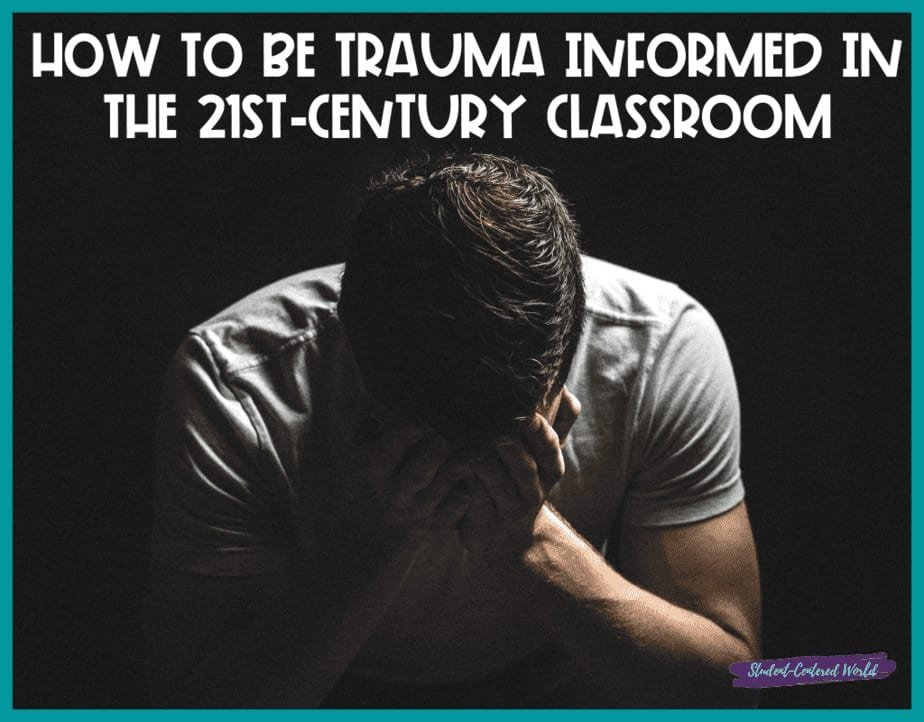
How to Be Trauma Informed in Teaching
By thinking about how traumatic events may affect students’ learning and behavior, we can begin to create a safe and supportive classroom environment that is sensitive to the effects of trauma. Being able to recognize these effects will allow you to respond in a more effective manner, providing support for your students so they can return to being fully engaged in their daily activities and in learning.
Teachers do not need to be experts in trauma and PTSD. However, it is important that they become familiar with some of the signs and symptoms that could indicate a child has been traumatized by his/her recent or past experiences, such as:
- Not sleeping well at night (for example, having bad dreams)
- Acting out in school (for example, becoming aggressive with peers or adults)
- Fidgeting and needing to walk around at recess time
- Having trouble concentrating and paying attention in class
- Suddenly failing tests or assignments after doing well on them previously
However you support your students during this time, the important thing is that they know they are not alone; you are there for them.
Helping students learn about trauma and PTSD is important because it helps reduce any feelings of shame or embarrassment. As well, learning more about how trauma affects the brain and body can help make students feel less different from their peers as they may experience similar physical reactions (e.g., increased heart rate) or emotions (e.g., fear, anxiety).
It’s also important to know some signs, symptoms, and impacts associated with trauma that might not be obvious in the classroom.
- Impairments in brain development are common for survivors of childhood trauma. Skills are often hindered both academically and socially as a result.
- Exposure to violence or neglect can also increase the risk of developing mental health problems such as PTSD, depression, and anxiety.
- Many survivors experience difficulty with memory and attention because their brains are constantly searching for the next threat. This may affect just about aspect of learning in some cases.
- A lack of trust is another common symptom that can affect how students interact with others. While trust is important and necessary, too much trust can be a problem for some survivors if they place their trust in the wrong people or circumstances.
- Finally, many survivors struggle with impulsivity and difficulty with effective problem-solving. This may make them seem like they do not care about consequences when it comes to their actions.
Trauma’s effect on behavior is also something to keep in mind when you are trying to understand students who might be struggling with it.
What if it’s the Teacher who Underwent the Trauma?
As human beings, we certainly are affected by trauma.
Teachers are people too, and when these teachers were younger they also experienced traumas in their lives that may have influenced how they think about themselves, others, their community or the world in general. Some of the most common traumas that affect teachers include sexual abuse, physical abuse or witnessing domestic violence in their homes. These traumas and others like it can impact the way these teachers see themselves and others, resulting in how they interact with students.
By knowing that we all experience trauma is important for understanding our co-workers and students as people; we’re all more alike than we think. Know that teachers sometimes forget to take care of themselves so they can better care for the children in their classrooms, but also know that it is okay to reach out if something is wrong.
This means working together as a community to ensure both students and teachers are cared for, which leads to healthy schools all around.
Overall it’s important for us as educators to remember that we are all human beings and therefore we will be affected by traumas in our lives as much as they may affect our students. It is important for us to try and be aware of the signs and symptoms if we believe that a student is traumatized so that we can provide them with the support they need.
How to be Trauma Informed Naturally in the Classroom
When you’re teaching on the topic of trauma, it’s important to be aware that this can mean many different things to many different teachers. For some people, this means thinking about how past traumas may influence your students’ thoughts or actions on a given subject; for example, if one student has experienced trauma involving weaponry, then they may be more sensitive to that topic than another student who has not.
It’s important for teachers to know that we’re all different and how we handle trauma, even though we may experience similar symptoms, they will be unique to each individual. It’s also important for students to understand this so they can accept their classmates’ reactions when discussing difficult topics rather than making them feel alienated.
Trauma-informed teaching can be as simple as taking a few minutes after introductions to share your personal experiences with the class. This will let students know that you’re not perfect, but also that it’s okay to talk about past traumas because they are human beings first and foremost. It may even open up a discussion about the topic that you’re teaching, but of course, this is entirely up to you and how comfortable you feel.
There are plenty more resources on trauma-informed teaching out there that deal with specific subjects. For example, if you’re going to be discussing gun violence in an English class then it’s important for students to know what it’s like for you as a teacher to deal with gun violence.
If you want, your students can even share their stories and experiences with the class which would encourage others to do so as well if they choose. This is all up to you and how much you feel comfortable participating in this exercise with your students
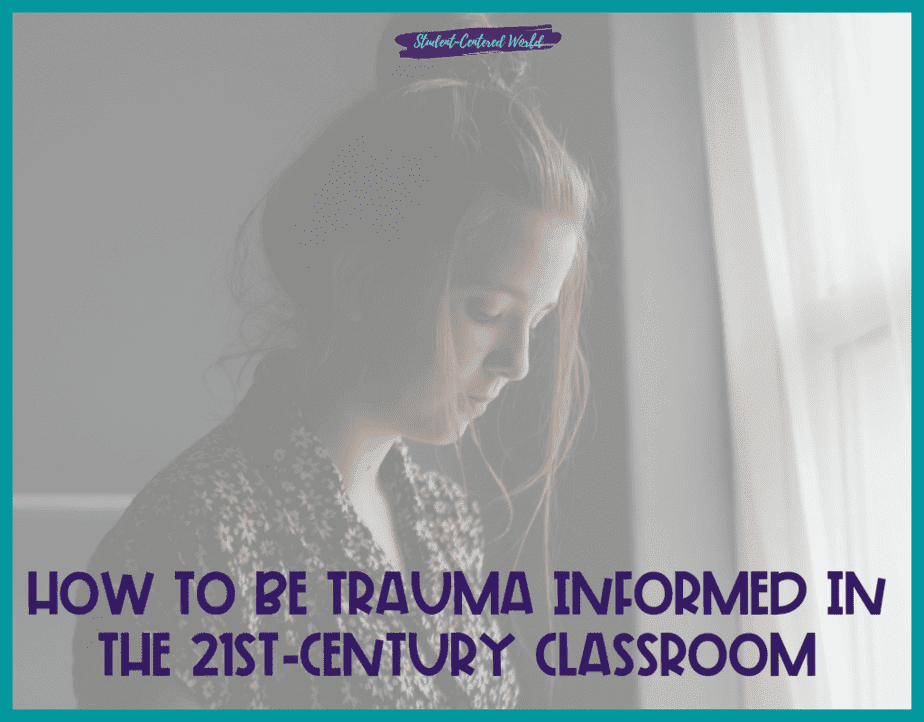
Knowledge is power
But the most important thing is to remember that knowledge is power. We may not understand how our students are feeling, but we can listen and provide them with the resources they need in order to get through their worst experiences. This starts by choosing “trauma-informed teaching” when educating your students.
We all have a curriculum to get through, but if there are outside factors that are either preventing us from articulating that contact or is preventing our students from being able to receive it, we need to make sure that we make the proper adjustments in our classroom for it to be a successful experience for all parties involved.
The first step in all of this is knowing how to be trauma informed as a teacher in the classroom. Even if you’ve been doing this for years and feel like you know the ropes, it’s still worth another look.
The fact of the matter is, trauma affects everything we do and say, and knowing how to be trauma informed, including the latest suggestions, could be the difference between a student struggling or excelling in the classroom.
Some general suggestions regarding how to be trauma informed include:
- Accepting that there are some things you will not know or any way you can help.
- Acknowledging that students who are dealing with trauma are not usually open about it, at least not right away. Listen for indirect signs of the issue and make the student feel safe to trust you with personal information.
- Remembering that children may not respond to complex problems in complex ways. Developmental, situational, acute, or chronic trauma can cause a student to have a wide range of responses.
- Asking yourself why the student is acting in a particular way, what you would do if you were in that situation, or what your best friend might do if faced with the same situation.
- Being clear about rules and expectations from the very beginning, but also being open to behavior that might break those rules may be a symptom of trauma as well as a result of it.
- Be consistent with both verbal and nonverbal communication with the student, as inconsistency is one of the most common triggers for trauma survivors.
How to find trauma support
It’s important to find help after a traumatic experience and is the first step in knowing how to be trauma informed as a teacher in the classroom; this means both as adults recovering from trauma or as adults trying to help out students. There are a number of different places that you can look, but the first option of course is to look in-house. Do you have a social worker or a school psychiatrist or even just a guidance counselor who had a background in this type of help? That is a great first place to start. Again, that is for you or for your students.
Whereas that might be the end of your ability to assist your students, there’s certainly still more that you can do for yourself.
There are a number of different online options. There is no shortage of different websites where you can look for this type of help and again, the important thing is to remember that we’re all human beings and therefore these experiences really do affect us in common ways. We may not all be affected in the same way or even at all, but it’s important to remember in this type of situation is that we all need help and there is no shame in reaching out when you need it.
Knowing how to be trauma informed also goes hand in hand with trauma-informed self-care. There’s a lot that we can do to take care of ourselves and our mental health and it really doesn’t require a huge investment in terms of time or energy. It just requires you to be aware and look for what options are out there. The important thing is not to lose hope if you or somebody you know has experienced trauma because there are many, many different treatment options.
Stop Driving the Teacher Struggle Bus
Are you struggling with student engagement, apathy, or keeping your class on track?
💫💫 There’s hope! 💫💫
Join my free teacher workshop “Choosing Choice” and in just 60 minutes, you’ll craft a practical plan to revitalize your teaching. Discover the magic of student choice in boosting engagement, gain quick implementation ideas, and explore strategies for year-long success.
Unlike overwhelming workshops, my approach guides you in real-time, providing more classroom options, reducing stress, and giving you more personal time.
Plus, you’ll earn a 1-hour professional development certificate and have 7 days of access.
Don’t miss this chance to transform your teaching; click below to secure your spot now!




